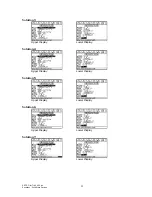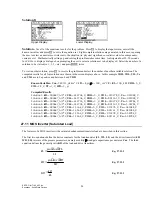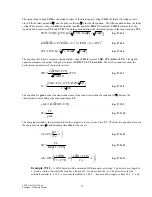
EE PRO for TI-89, 92 Plus
Equations - Solid State Devices
82
Entered Values
Computed Results
Solution -
Since the dopant is a donor, use equations 27.1.6 and 27.1.7 to find compute a solution. Select these
equations and press
„
to display the input screen, enter all the known variables and press
„
to solve the set of
equations. To convert the results of Ef and Ei to units of electron volts, highlight each value press
‡
/Opts and
y
/Conv to display the unit menu in the tool bar. The computed results are shown in the screen displays above.
-PQYP8CTKCDNGU'E
AG8
'X
A,
66
A-
OP
OR
0F
Z'AEO@
%QORWVGF4GUWNVU
'(
AG8CPF
'K
AG8
Example 27.1.2 -
Find the diffusion penetration depth after one hour for phosphorus atoms with a diffusion
coefficient of 1.8 x 10
-14
cm
2
/s. The carrier density at the desired depth is 8 x 10
17
cm
-3
while the surface density is 4 x
10
19
cm
-3
.
Entered Values
Notice of nsolve routine
Calculated Results
Solution -
Equation 21.1.8 is needed to compute the solution for this problem. Select it by highlighting and pressing
the
¸
key. Press
„
to display the input screen, enter all the known variables and press
„
to solve the equation.
The nsolve routine is used since x is an input for the user defined function erfc (see Chapter 15: Introduction to
Equations for more information about nsolve and user-defined functions). The computed results are shown in the
screen displays above.
-PQYP8CTKCDNGU&
'AEO@U
0
'AEO@
0
'AEO@
V
AU
%QORWVGF4GUWNVU
Z
'A
µ
27.2 PN Junctions
These equations describe the properties of PN junctions. They can be classified in two four distinct categories.
The first equation calculates the built-in voltage Vbi for a step junction in terms of temperature TT, the doping
densities Nd and Na, and the intrinsic density ni(TT).
















































